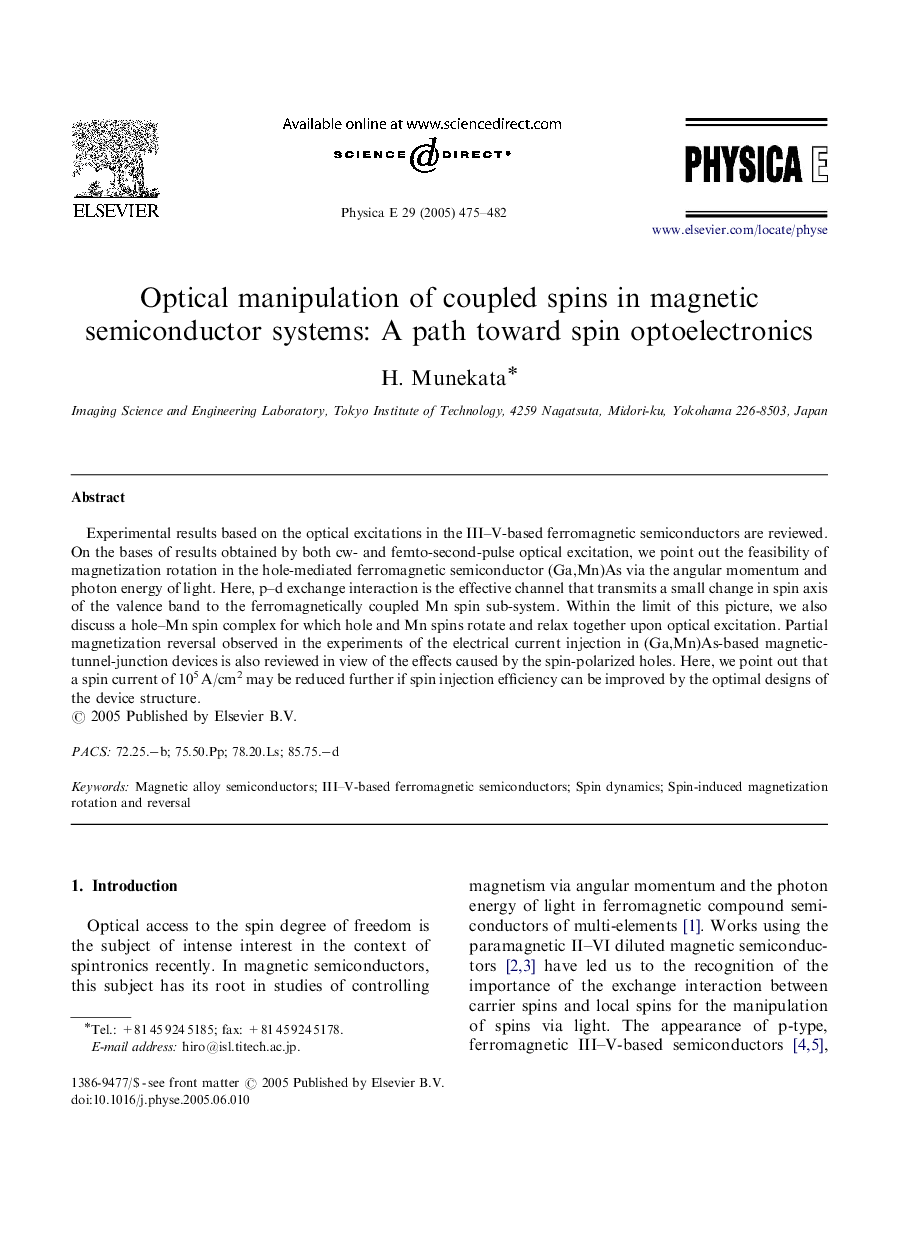| Article ID | Journal | Published Year | Pages | File Type |
|---|---|---|---|---|
| 9789567 | Physica E: Low-dimensional Systems and Nanostructures | 2005 | 8 Pages |
Abstract
Experimental results based on the optical excitations in the III-V-based ferromagnetic semiconductors are reviewed. On the bases of results obtained by both cw- and femto-second-pulse optical excitation, we point out the feasibility of magnetization rotation in the hole-mediated ferromagnetic semiconductor (Ga,Mn)As via the angular momentum and photon energy of light. Here, p-d exchange interaction is the effective channel that transmits a small change in spin axis of the valence band to the ferromagnetically coupled Mn spin sub-system. Within the limit of this picture, we also discuss a hole-Mn spin complex for which hole and Mn spins rotate and relax together upon optical excitation. Partial magnetization reversal observed in the experiments of the electrical current injection in (Ga,Mn)As-based magnetic-tunnel-junction devices is also reviewed in view of the effects caused by the spin-polarized holes. Here, we point out that a spin current of 105Â A/cm2 may be reduced further if spin injection efficiency can be improved by the optimal designs of the device structure.
Related Topics
Physical Sciences and Engineering
Materials Science
Electronic, Optical and Magnetic Materials
Authors
H. Munekata,
